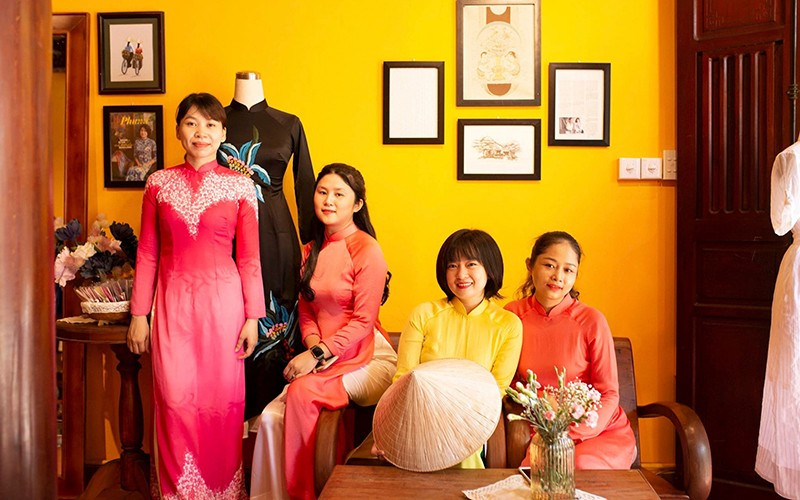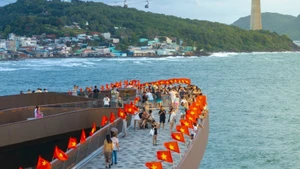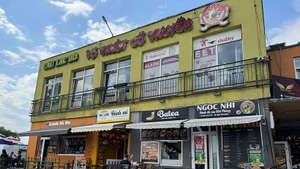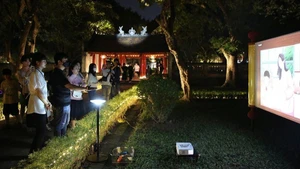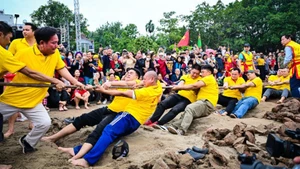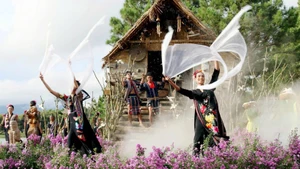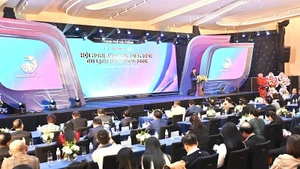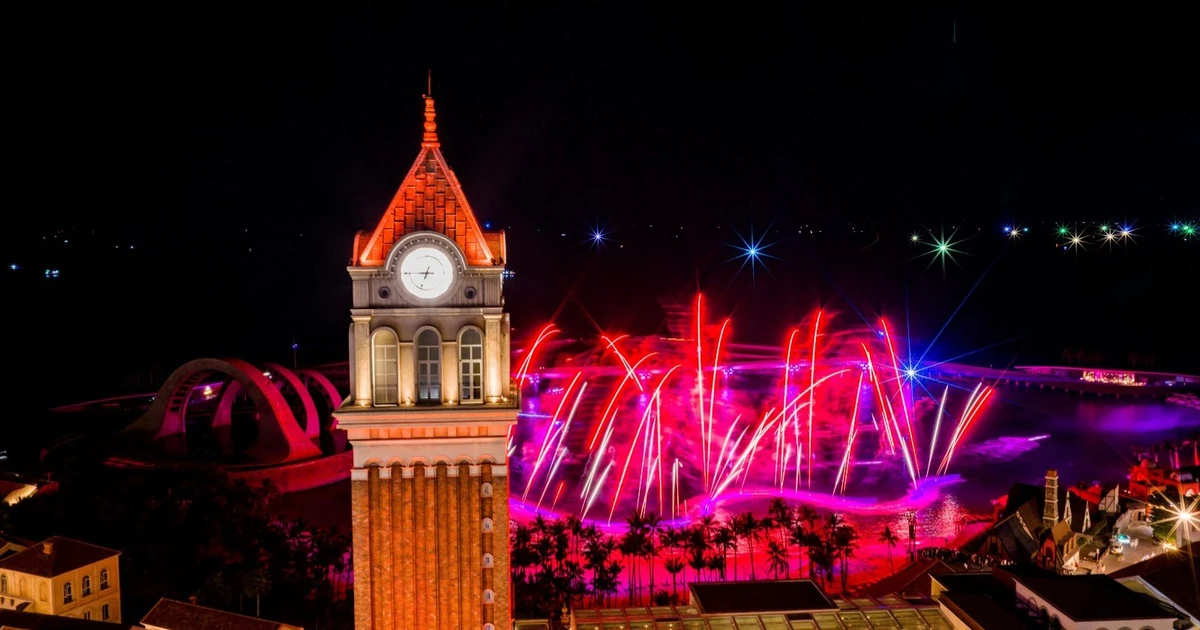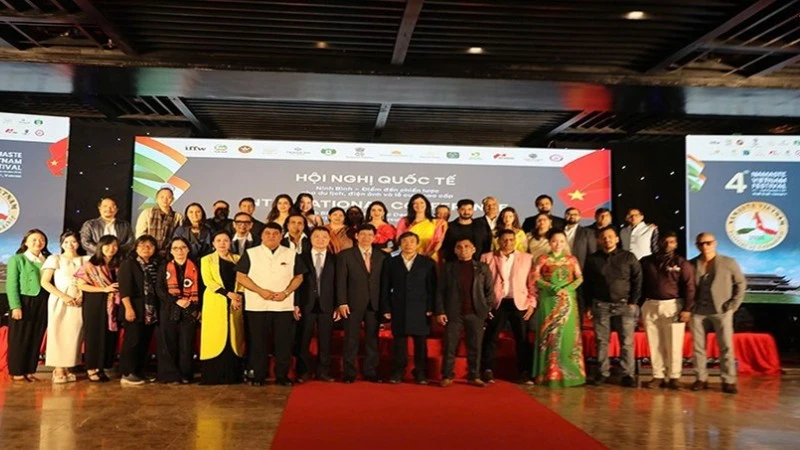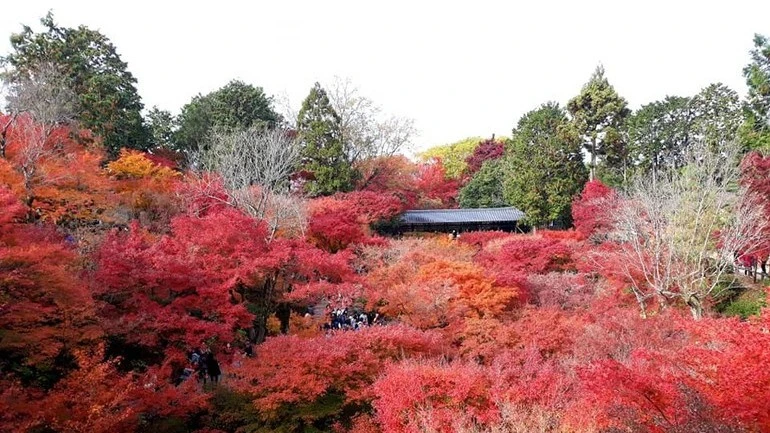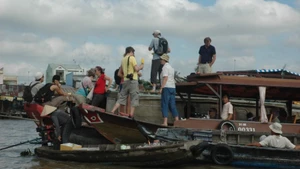With the development of tourism since around the 2000s, "quick tailoring" in Hoi An has gradually become a unique tourism product, attracting both domestic and international visitors with its convenience, high aesthetic value, and connection to various craft villages such as silk weaving and embroidery.
Strolling around the streets of Hoi An, it is easy to spot charming tailor shops located next to ancient temples, along the picturesque Hoai River. According to local cultural sector’s statistics, there are approximately 350 establishments in Hoi An providing tailoring services such as custom-made clothing, ready-to-wear items, fabric distribution, and accessories. Whether it is a grand storefront on the main street or a modest stall in Hoi An's market, these tailor shops share a common feature that they can custom make almost any style, whether it is from the past or the latest trends. In addition, the attentive and friendly staff are a key part of the experience.
Tran Thi Thuy Binh, the owner of Chiba Hoi An Tailor Shop (34 years old, Minh An Ward), explained that the quick-tailoring process for tourists typically takes between 4 to 6 hours, depending on the product. Each step, from consultation and fabric cutting to sewing and buttoning, is specialised to ensure speed and quality. Customers can take measurements and then continue with their sightseeing plans, while the shop completes the order on time, either for pickup or delivery to the customer's accommodation.
Binh also said that in the past two years, videos featuring keywords like "one-day tailoring in Hoi An" and "experience making a dress in Hoi An" have gained millions of views across various social media platforms, significantly increasing the number of customers. On weekends or during peak tourist seasons, the shop can serve up to hundreds of customers a day. European and American tourists often choose to have suits or evening dresses made, while Vietnamese and some Asian customers, such as those from Japan and the Republic of Korea, typically order Ao dai (Vietnamese traditional dress) or beach dresses.
The tailoring profession in Hoi An developed quite early, as the city was once a bustling trading port and a key link in the "Silk Road by the Sea" during the 16th and 17th centuries. Then, in the early 20th century, European-style tailoring shops began to appear. By 2006, the tailoring industry in Hoi An reached significant milestones. That year marked the Quang Nam National Tourism Year, and, for the first time, tailoring was recognised as one of the 50 official tourism products of the locality. In the same year, the prestigious American magazine Time honoured Hoi An as one of the places with the fastest and most affordable fashion tailoring services in the world, offering a wide variety of styles.
The tailoring industry had the opportunity to grow significantly in terms of the number of establishments, attracting skilled workers, investing in expertise, and focusing on understanding tourists' shopping preferences. Several tailoring shops in Hoi An have even been selected to make outfits for royalty, politicians, and famous artists from around the world. The ability to quickly produce custom-made clothing for short-term visitors, ensuring a perfect fit and neat appearance, is the core factor that makes Hoi An's tailoring service so appealing to tourists. While visitors to other destinations typically can only buy ready-made clothes, in Hoi An, they can experience the process of handcraft tailoring and leave with a piece of clothing made just for them as a unique and memorable souvenir.
Moreover, the significant impact of social media platforms like TikTok and Facebook cannot be denied, as they continuously promote the perfect and reasonably priced tailoring services in Hoi An to international friends. Thousands of video clips sharing positive experiences have spread the word, attracting many foreign tourists to discover Hoi An and Vietnam. To serve their customers, tailor shops in Hoi An must constantly update their designs, ranging from elegant suits to intricate dresses and even swimwear, all made in just a few hours. The tailoring experience is also a time when customers and the tailors — most of whom are women from Hoi An and surrounding areas — can chat and share knowledge about fashion and the ancient town's way of life. As a result, despite the increasing availability of ready-made clothing, tailor shops in Hoi An still hold a special place in the market.
According to many cultural research experts, the tailoring profession in Hoi An is a special brand that not only brings economic benefits but also preserves many traditional values and tells human stories. Tailoring is the core of a value chain that creates jobs for thousands of direct and indirect workers, such as tailors, embroiderers, silkworm farmers, fabric weavers, fabric sellers, delivery personnel, and tour guides.
The tailoring profession is also part of the ancient town's heritage, with an annual "Craftsmanship Day" celebrated to honour the craft. Held on the 12th of the 12th lunar month each year, this is the day when tailors in Hoi An solemnly perform rituals to pay homage and show gratitude to their ancestors who established and passed down the craft of tailoring. The event also includes skill competitions and performances of folk art.
At the same time, a new generation of artisans is both inheriting and creatively developing new styles and products to preserve the craft. In the craft village that was established in 2023 in Cam Nam Ward, although still in its early stages, nearly 10 creative craft stalls have been set up, with many young people who are the second or third generation in families with a long tradition of tailoring.
Travelling not only allows tourists to experience beautiful scenery and delicious food, but also gives them the opportunity to enjoy convenient services and take home unique products. It is easy to understand why tailoring in Hoi An has become such a prominent trend in recent years. The graceful Ao dai and beautiful fashion pieces from this UNESCO-recognised World Heritage site are now carried by travellers to distant lands, showcasing the craftsmanship of Vietnamese artisans and promoting the destination of Hoi An, as well as Vietnam in general.
